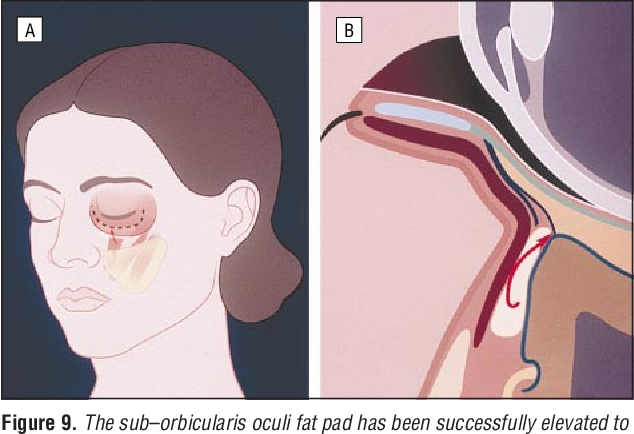homo_faber
i thought this was a looksmaxing forum
- Joined
- Oct 25, 2020
- Posts
- 3,953
- Reputation
- 5,952

Background: Internal eyelid spacer graft is routinely placed during lower eyelid retraction surgery, which may be unnecessary. Objectives: To evaluate the efficacy of lower eyelid retraction surgery without internal graft in select cases. Methods: Retrospective analysis of patients undergoing reconstructive lower eyelid retraction surgery without internal graft, by one surgeon from 2013 to 2015. Surgical technique included transconjunctival lower eyelid retractor lysis, canthoplasty, and temporary tarsorrhaphy, with or without subperiosteal midface-sub oribularis oculi fat (SOOF) lifting and scar lysis. Eyelids with true lower eyelid middle-lamella shortage were excluded. Analysis included 17 surgeries (11 patients). Eight of 11 patients had undergone at least one previous lower eyelid surgery with resultant lower eyelid retraction and sclera show. Preoperative and postoperative photographs at longest follow-up visit were analyzed with standardized measurements. Patient satisfaction was recorded using questionnaire. Results: Etiologies of lower eyelid retraction included prior lower blepharoplasty, thyroid eye disease, and chronic facial palsy. All 11 patients (17 procedures) demonstrated improvement of lower eyelid position. The mean improvement of marginal reflex distance was 2.2 mm (range, 1.6-2.8 mm). There was one case of mild overcorrection. The average follow-up was 7 months (range, 6 months-2 years). Midface lift was performed for 14 of 17 eyelids. Conclusions: This study demonstrates improvement of lower lid position after lower eyelid retraction surgery without internal eyelid spacer graft in select patients. Most patients in our study had undergone previous lower eyelid blepharoplasty and required midface-SOOF lifting. Background: Internal eyelid spacer graft is routinely placed during lower eyelid retraction surgery, which may be unnecessary. Objectives: To evaluate the efficacy of lower eyelid retraction surgery without internal graft in select cases. Methods: Retrospective analysis of patients undergoing reconstructive lower eyelid retraction surgery without internal graft, by one surgeon from 2013 to 2015. Surgical technique included transconjunctival lower eyelid retractor lysis, canthoplasty, and temporary tarsorrhaphy, with or without subperiosteal midface-sub oribularis oculi fat (SOOF) lifting and scar lysis. Eyelids with true lower eyelid middle-lamella shortage were excluded. Analysis included 17 surgeries (11 patients). Eight of 11 patients had undergone at least one previous lower eyelid surgery with resultant lower eyelid retraction and sclera show. Preoperative and postoperative photographs at longest follow-up visit were analyzed with standardized measurements. Patient satisfaction was recorded using questionnaire. Results: Etiologies of lower eyelid retraction included prior lower blepharoplasty, thyroid eye disease, and chronic facial palsy. All 11 patients (17 procedures) demonstrated improvement of lower eyelid position. The mean improvement of marginal reflex distance was 2.2 mm (range, 1.6-2.8 mm). There was one case of mild overcorrection. The average follow-up was 7 months (range, 6 months-2 years). Midface lift was performed for 14 of 17 eyelids. Conclusions: This study demonstrates improvement of lower lid position after lower eyelid retraction surgery without internal eyelid spacer graft in select patients. Most patients in our study had undergone previous lower eyelid blepharoplasty and required midface-SOOF lifting. The author proposes that "routine" placement of lower eyelid internal spacer/graft may not be necessary during lower eyelid retraction surgery. The author proposes that "routine" placement of lower eyelid internal spacer/graft may not be necessary during lower eyelid retraction surgery.

Lower Eyelid Retraction Surgery Without Internal Spacer Graft
Download Citation | Lower Eyelid Retraction Surgery Without Internal Spacer Graft | Background: Internal eyelid spacer graft is routinely placed during lower eyelid retraction surgery, which may be unnecessary. Objectives: To... | Find, read and cite all the research you need on ResearchGate


